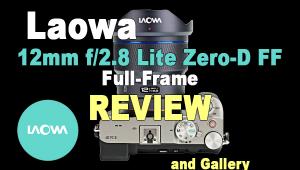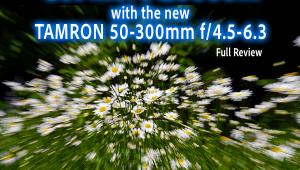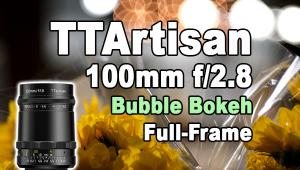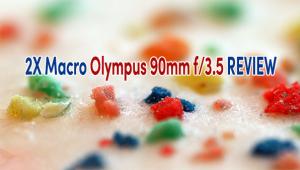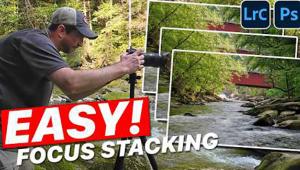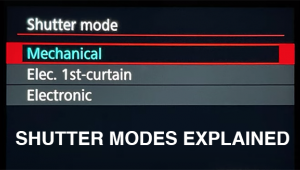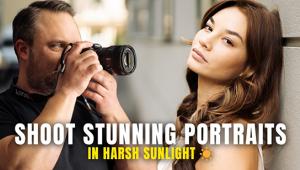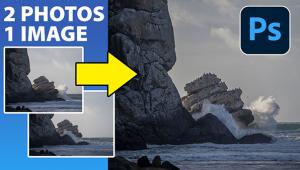Nikon Micro Nikkor 85mm f/3.5G ED VR: Vibration Reduction In A Macro Lens
The 85mm VR Micro Nikkor ($529.95, MSRP) benefits from next-generation VR II technology and is stated to deliver usable results at up to four steps below the optimum shutter speed. Keep in mind that we’re dealing with a DX-dedicated lens for an APS-C sensor camera (like my D300). So the optimum shutter speed when shooting handheld and without VR on translates into 1/(Lens Focal Length x Sensor Factor), or 1⁄85mm x 1.5, or 1⁄125 sec (rounded off). (Because this is a DX lens and this is Nikon, the multiplication factor is 1.5, so the effective focal length is approximately 128mm.)
85mm VR Micro Nikkor
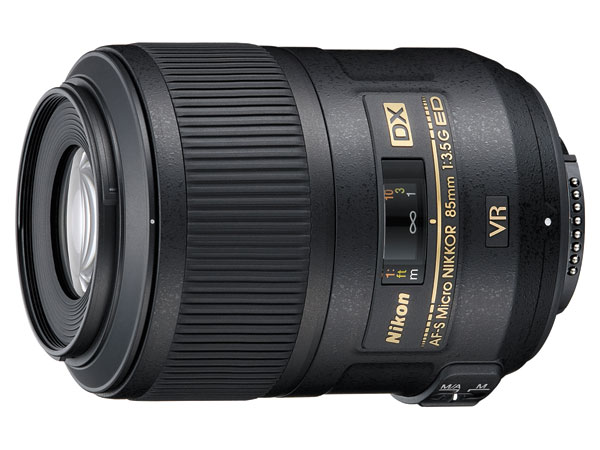
Courtesy of Nikon USA
According to my tests, the lens delivered acceptably sharp results with a handheld camera at normal shooting distances over a range of shutter speeds exceeding stated parameters. In other words, I was able to achieve usably sharp results at five shutter-speed values below the optimum, not just four.
Optical Performance At Half Life-Size

All Photos © Jack Neubart
Of course, the question remains: does VR provide the benefits one might suppose at macro magnification, notably life-size? Remember, the closer you get to the subject, the more any movement is magnified, notably camera movement (translated as camera shake) in this case. So I put the lens to the test—admittedly subjective with results that will vary from person to person—but I trust my results will be close to what you can get from this lens.
At life-size, VR was surprisingly effective, and while shooting life-size while hand holding is living on the edge, images were better across the board with VR engaged than without it. In the manual, Nikon does state that the benefits of Vibration Reduction will be reduced as you approach higher magnifications, and experience bears that out. Still, you have to be impressed by these results.
Centering A Macro Shot

I also tested to see if VR had any effect, good or bad, on the recorded image with the camera mounted on a sturdy tripod. As it turned out, at a shutter speed of 1 second, with the camera manually fired, VR had a beneficial effect, producing a visibly sharper image than without VR. At faster shutter speeds, I observed no degrading effects with VR engaged while the camera was on the tripod, whether triggered manually or with the self-timer. That means, at the very least, that you don’t have to worry about keeping VR switched on while the camera is mounted on a tripod. However, if you use a monopod or spindly-legged tripod, VR should remain engaged.
I don’t restrict my macro lenses to just shooting macro shots. I used the lens on a variety of subjects, including close-ups and scenics. With the lens shade in place, I photographed a sunset without incurring any flare or ghosting, proof that Nikon’s Super Integrated Coatings were working. Earlier in the day, I used this lens to capture scenes along Chicago’s Lake Michigan shore, including a beach volleyball game.
VR At Life-Size



Overall, the superior optical performance of the lens delivered very satisfying results. And that was further borne out by my quasi-bench tests evaluating edge-to-edge performance. The lens showed itself to be a trooper, even at maximum aperture. I did find that there was some vignetting at or near maximum aperture, but this was mild and fully corrected by stopping down to f/5.6 (actual taking aperture).
I can’t say I’d trade in my 60mm Micro Nikkor for this lens (see the “Battle of the Micro Nikkors” sidebar for comparisons). But in the absence of that lens, I would quickly grab up this lens for my D300. The 85mm VR Micro has a nice balance and good feel. Autofocusing was as expected of a lens with this maximum aperture, but I did have to switch to manual at or near life-size magnification, as is my wont with any macro lens at these settings. That said, I had no trouble whatsoever focusing manually. All in all, I thoroughly enjoyed the experience, first exposure to last.
Flash Vs. Ambient Light: Daylily Life-Size


Built-In Flash: Yellow Flower

Battle Of The Micro Nikkors: 85mm VR Vs. 60mm
As of this test there were two Nikon macro lenses under 105mm: the 85mm and a slightly older 60mm. Both lenses feature Nikon’s Silent Wave Motor for quiet autofocusing, full manual override during autofocusing, internal focusing to facilitate the use of a circular polarizer, and rounded nine-blade diaphragm for circular out-of-focushighlights and smoother backgrounds.
60mm Vs. 85mm VR Micro: Full Size

85mm VR advantages: Vibration Reduction optical image stabilization for a more stable viewfinder image and, more importantly, largely blur-free images when shooting by available light at shutter speeds calculated to be less than optimum. A 52mm filter thread for smaller, less expensive front-mounted filters, especially polarizers; less expensive; optimized for Nikon DX mounts and usable on Nikon FX-mount cameras at APS-C crop effective focal length (128mm).
60mm advantages: No VR. Faster maximum aperture (f/2.8 vs. f/3.5, although the VR function on the longer lens effectively counters this in many situations); a combination of aspherical and ED elements for further optical enhancement; depth-of-field indicators (most practical at normal-range focus settings); finer gradations in the macro range indicators between 1:10 and 1:1 (a minor point, perhaps, but might be important to field investigators); fewer lens elements with addition of Nano Crystal Coat lens coatings beyond the Super Integrated Coatings that are common to both lenses (Nano Crystal Coat, according to Nikon, is an anti-reflective, extra-low refractive index coating, which features nanometer-size crystallized particles); compatible with both FX (full-frame sensor) and DX (APS-C) mounts, which means you won’t have to buy a new macro lens if you use both or go FX later. The effective focal length on Nikon DX-mount cameras is 90mm. (MSRP: $599.95.)
Church With Low-Light Levels

Technical Specifications
AF-S DX Micro Nikkor 85mm f/3.5G ED VR
Mount: DX
Focal Length: 85mm (= 127.5mm/35mm equivalent)
Maximum Aperture: f/3.5 (f/5 at 1:1 reproduction ratio, automatically compensated)
Minimum Aperture: f/32 (f/45 at 1:1 reproduction ratio, automatically compensated)
Lens Construction: 14 elements in 10 groups (one ED element)
Minimum Focus Distance: 0.9 ft (0.286m)
Maximum Reproduction Ratio: 1:1 (with reproduction ratio indicators)
Diaphragm Blades: Nine (rounded)
Focusing: Autofocus with a built-in Silent Wave Motor and manual focus override or full manual (via switch on lens)
Filter Attachment Size: 52mm
Dimensions (Diameter x Length): (Approx.) 2.9x3.9”/73x98.5mm
Weight: (Approx.) 12.5 oz/355g
Supplied Accessories: 52mm snap-on front lens cap (LC-52); rear lens cap (LF-1); bayonet hood (HB-37); flexible lens pouch (CL-1018)
Price: $529.95, MSRP
For more information, contact Nikon Inc. at: www.nikonusa.com.
